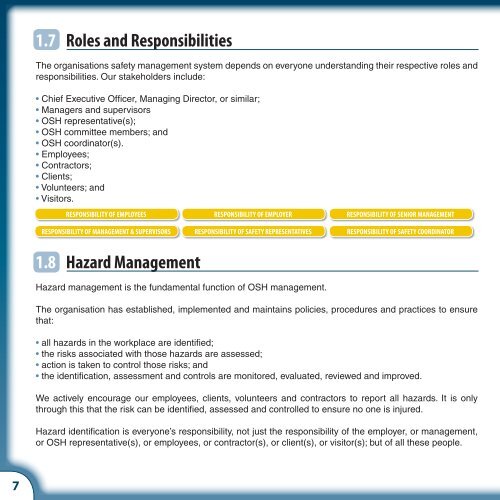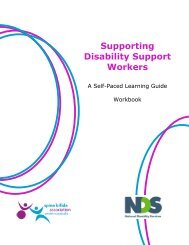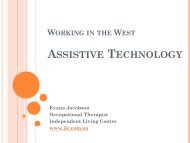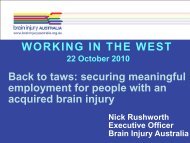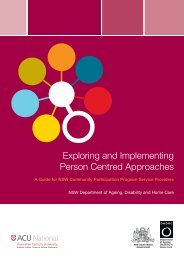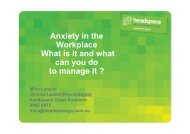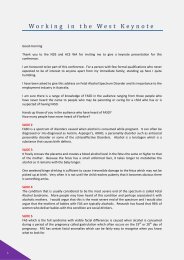Occupational Safety & Health, Workers Compensation ... - IDEASWA
Occupational Safety & Health, Workers Compensation ... - IDEASWA
Occupational Safety & Health, Workers Compensation ... - IDEASWA
- No tags were found...
You also want an ePaper? Increase the reach of your titles
YUMPU automatically turns print PDFs into web optimized ePapers that Google loves.
1.7 Roles and ResponsibilitiesThe organisations safety management system depends on everyone understanding their respective roles andresponsibilities. Our stakeholders include:• Chief Executive Officer, Managing Director, or similar;• Managers and supervisors• OSH representative(s);• OSH committee members; and• OSH coordinator(s).• Employees;• Contractors;• Clients;• Volunteers; and• Visitors.1.8 Hazard ManagementHazard management is the fundamental function of OSH management.The organisation has established, implemented and maintains policies, procedures and practices to ensurethat:• all hazards in the workplace are identified;• the risks associated with those hazards are assessed;• action is taken to control those risks; and• the identification, assessment and controls are monitored, evaluated, reviewed and improved.We actively encourage our employees, clients, volunteers and contractors to report all hazards. It is onlythrough this that the risk can be identified, assessed and controlled to ensure no one is injured.Hazard identification is everyone’s responsibility, not just the responsibility of the employer, or management,or OSH representative(s), or employees, or contractor(s), or client(s), or visitor(s); but of all these people.Training for employees is ongoing. Hazard forms are used to document the recognised hazards and assist tocollect the relevant data to prevent ongoing injury or damage.There are various methods for identifying hazards. These include;• Consultation with employees in the workplace. Employees possess the knowledge and experience to bestappreciate the hazards that could arise, how they could arise and how to eliminate them;• Inspection of work places;• Review of past hazards, incidents and accidents.The protocol for reducing risk is known as the Hierarchy of Controls which identifies the sequence we shouldfollow in controlling an OSH risk.The Hierarchy of Controls is as follows:Elimination Substitution Engineering Controls Administrative Controls Personal Protective EquipmentElimination is the most effective method of risk control as it is the act of completely removing the risk from theworkplace.Example: The total removal of a particular hazardous substance (chemical) from use within the workplace.Substitution is focused on replacing or introducing new machinery, substances or work practices or processesthat will reduce the level of risk associated with the hazard.Example: Changing a particular chemical used to a less hazardous one.Engineering controls are associated with changing or modifying the workplace or machinery to reduce thelevel of risk.Example: Fitting guards to a piece of machinery, creating a barrier between the person and the hazard.Administrative controls are about re-organising the way work associated with the hazard is being performedand/or providing instruction, training and/or supervision.Example: Defined work breaks to address problems of fatigue.Personal Protective Equipment (PPE) is any item of equipment or clothing that establishes some form ofbarrier between the person and the hazard.Example: Gloves, aprons, safety glasses or goggles.7 8Training Services


